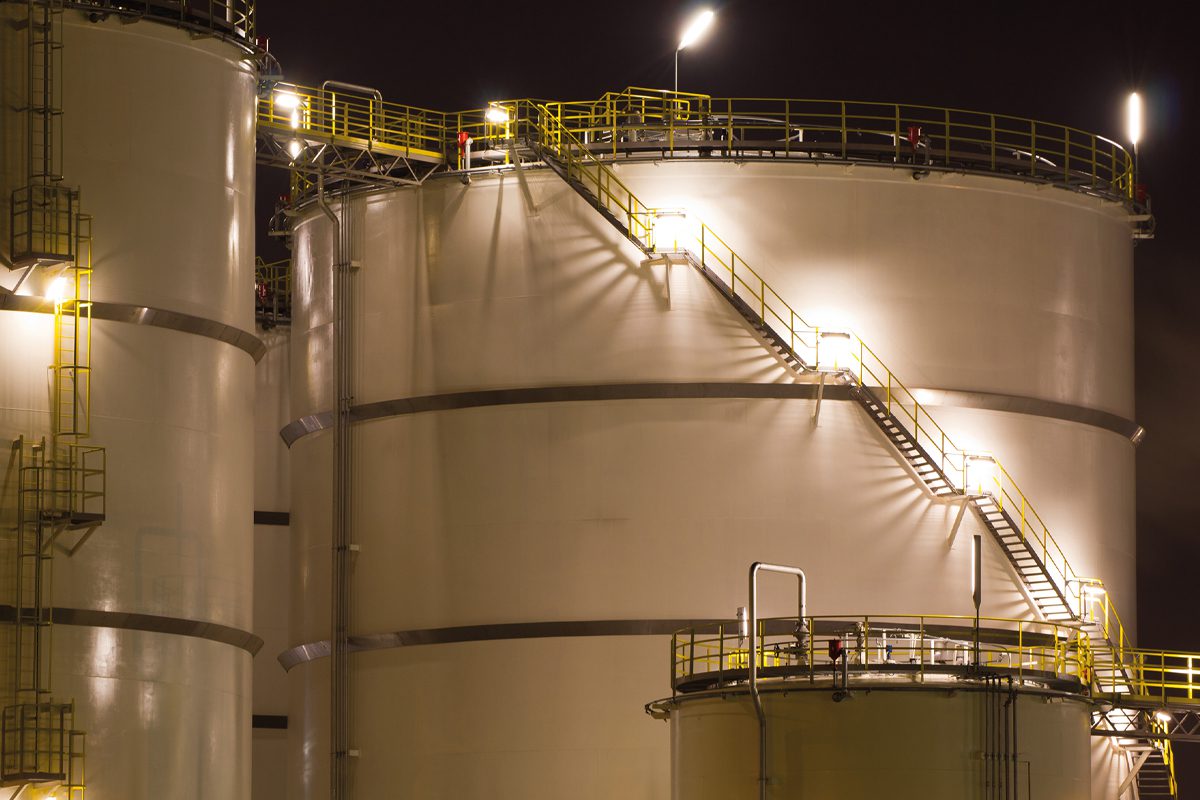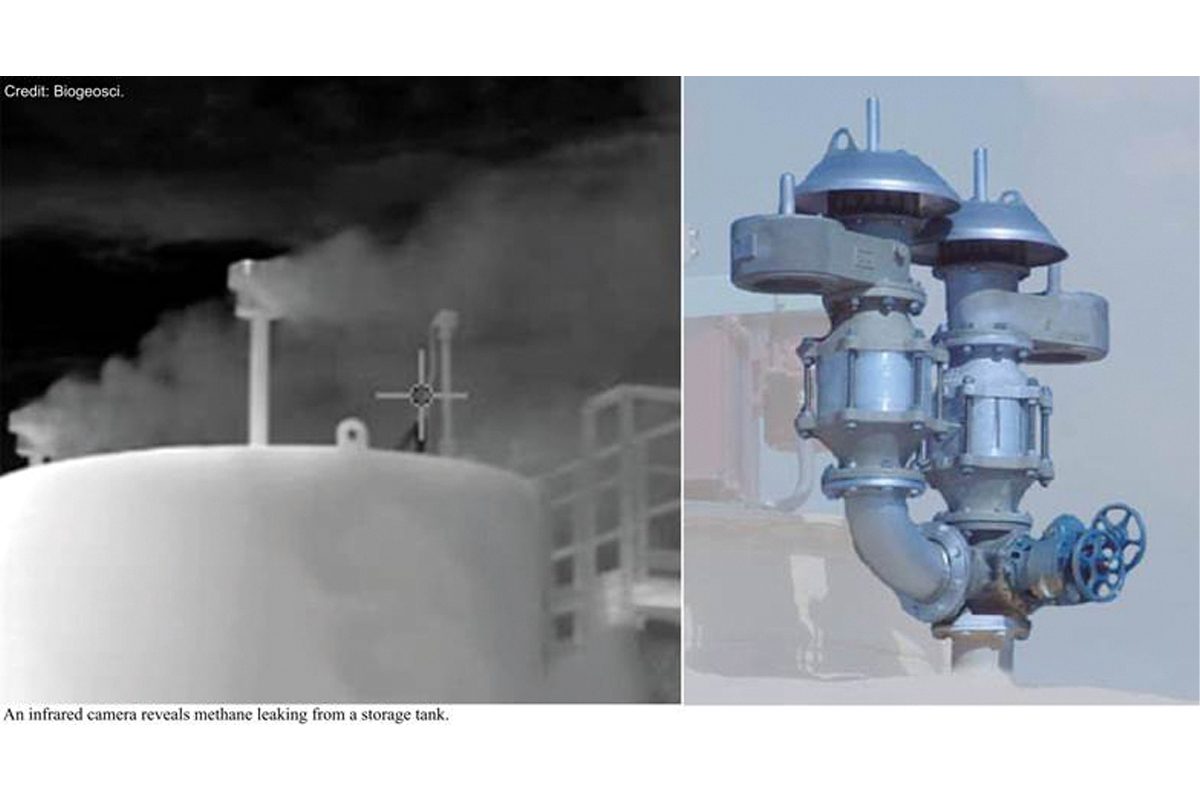Leaky tanks mean fugitive emissions, air pollution, increased risk of accident and – in the case of biogas operators – loss of product and revenue. On a mission to better inform and equip tank operators in relation to these risks is storage tanks expert Assentech. Envirotec asked the firm about important gaps to be plugged in the information commonly provided to tank specifiers, and in areas such as production testing, leak testing and tank calibration

When we think of air pollution, most of us rarely think of storage tanks as an important culprit. Indeed, it seems neither do tank operators, in many cases – and this in itself might be a serious problem. “Most people are not even aware of the quantity of emissions their tanks are releasing to the atmosphere,” says Ewart Cox, managing director of Assentech. “So they may not even be aware they’ve got an issue.”
The need to know what quantity of vapour might be leaking out of a tank is obviously more urgent on sites that store flammable or dangerous materials, and is more tightly regulated. The Dangerous Substances and Explosive Atmospheres Regulations (DSEAR) 2002, for example, require employers to control the risks to worker safety from fire, explosions and substances corrosive to metals.
Notwithstanding the risk of a “Buncefield”-style incident, or something catastrophic, the risks presented by fugitive emissions can be easier to overlook, with safety consequences that might only make themselves known over the longer term. A steady but slow release of VOCs, for example, exposes personnel on site to the risk of health problems affecting the skin, heart, kidneys and respiratory system. The HsE is becoming more vigilant in its efforts to regulate against these hazards, and case law is evolving to protect people from long-term exposure, says Cox.
The problem of tank leaks arises in the first place because of the need to provide vents on atmospheric storage tanks, to prevent any build-up of pressure between the vessel’s interior and exterior, as a result of temperature changes or the transfer of liquids into or out of a tank, for example.
Optimising a design classic
The critical component here is the breather valve – sometimes called a “pressure/vacuum relief valve” – which tends to be mounted on the nozzle opening on the top of an atmospheric storage tank. These employ a system of weighted or sprung pallets to equalise the pressure in a controlled fashion, using a scheme whose design hasn’t changed much since the 1960s, says Cox.
The most recent innovation has been with “capacity flow”, whereby components maintain 100% capacity at 10% over-pressure, thereby providing an additional margin of safety and reliability, but this is only at the higher end of the market.
The market for breather valves is “very competitive”, says Cox. For the same size of valve, you will see a large variation in price. A product that might cost £800 at the budget end of the market, could be priced at £2500 as a premium offering.
A key consideration seems to be whether or not the product has been sufficiently tested, and the tank specifier provided with a sufficient level of documentation attesting to this. Two international standards exist; API2000 and ISO28300,were co-branded in 2008, and were the first to formally stipulate a maximum allowable leak rate for new valves, although a form of leak testing had existed in API bulletins since the 1960’s.
Manufacturers can cut out the cost of these components by skipping production and leak testing. Cox believes “over 80% of the industry just manufactures the valve without production testing or even a nod to tightness”. Out of 20 mainstream, worldwide makers of breather valves, he said, Assentech has found only two that fully meet the standards.
“No biogas plant should operate at higher than 75% of the tank set-point.”
No standard, no safety
The simple fact of the matter, he suggests, is that “if you can’t demo the actual flow test results in accordance with the API2000 standards, then you’re putting customers at risk”. The risk with cheaper components is that they won’t have been flow-tested on an API-approved rig, and so might suffer from leakage – and the tank owner will be in the dark about the size of this leakage. They might also suffer from poor construction, poor design and a lack of traceability. Many buyers do not know about these risks, he said, so will simply opt for the cheapest components, on the assumption that a breather valve just does what it says on the tin, as it were – and opens when it reaches a specified set-point pressure.
“If I had my way,” says Cox, “every valve would get a leak test,” and the tank operator would always have documentation to hand showing that this had been performed at some point within the previous three years. This figure varies depending on circumstances though – one customer who stores highly corrosive acids is scheduled for a yearly re-build.
“We draft a written scheme of examination for every customer,” he says.
One problem he identifies is a lack of standards to which tank operators can adhere when it comes to the maintenance and testing of breather valves. And some of the equipment used here can be unreliable.
Rotameters have been a common standby here, he suggested, but these can be inconsistent. Assentech has developed an automated testing rig to circumvent some of the problems. The person carrying out the test enters the details on a laptop, and the test puts the valve through a set-point test then a leak test, only stopping when the functional test sequence is complete or if user aborts the test. This produces “completely reliable results”, he says, and a flow curve that offers “a true reflection of how the valve operates”.
Correct full functional testing of a valve requires that it to be removed from the tank, and historically transported to another site for testing, presenting onerous logistics for a tank operator. Assentech has developed a mobile testing rig that he says can be taken to a tank operator’s site in the back of a van, and can be lifted by two people. The system employs a proprietary mechanical design – for which the firm has filed two patents – and the use of neural network software, a self-learning capability that is brought to bear on the testing situation, to flag up a warning if the results appear outside of what should be expected.
Standard methods of testing a breather valve take about 20 minutes, says Cox, but this automated test rig can do it in less than five minutes, and potentially down to around 90 seconds. Importantly, he says, the independence of the rest results is guaranteed. “We think that’s very important,” he said, given the potential that exists for unscrupulous engineers to fail valves and convince the customer of the need for a potentially costly switch-up where it might not be necessary.

Biogas bloopers
Where valve suppliers or tank operators try to skimp on testing, and end up with leaky tanks, the losers are not only the firms themselves, but the environment. In some cases, the immediate loss in revenue is more obviously apparent. Biogas plants use breather valves, as a level of protection where the plant might produce more gas than can be stored at one time. As this sector continues to struggle to realise a reasonable unit price for the electricity operators generate, there will continue to be pressure to buy the cheapest components, and with breather valves the danger here is that they won’t have been leak tested, and may feature little if any sealing at all.
Cox suggests that a valve with a diameter of 6in or less should leak no more than around 14 litres per hour when at 75% of its set-point, to comply with existing standards. He has seen some of the cheaper valves here leaking 150,000 litres per hour. “That’s money,” he said, “and it also has a massive environmental impact.” Assentech has been working with the Environment Agency to draft guidance notes in relation to ensuring biogas plants can safeguard against the unplanned leakage of methane from these plants.
An operator might not understand, he says, that a valve doesn’t just pop open when it reaches its set point, but gradually opens as it reaches this point – and so they might not appreciate that the valve is probably leaking. “No biogas plant should operate at higher than 75% of the tank set-point,” he recommends.
The EA now uses thermal imaging cameras to help spot leaks in biogas plants – these pick up a leak because fugitive methane gas emissions will be at a lower temperature than the surrounding atmosphere, showing up as a lighter colour escaping from a breather valve.
Cox says that up to 85% of biogas plants could “leak terribly”. But informed procurement and servicing of breather valves might be all that’s needed to turn things around. He says one customer operating a £40 million site saw their problems disappear “overnight”. ‘This is particularly important where methane is 26 to 38 times more damaging to the atmosphere than carbon dioxide.’
As Cox suggests, it’s “a simple fix to ensure a tank vent is functionally tested”, and of the tank operators who have approached his firm for help and advice, or simply for a valve service, he doesn’t believe any of them have found a net increase in cost from the undertaking.







